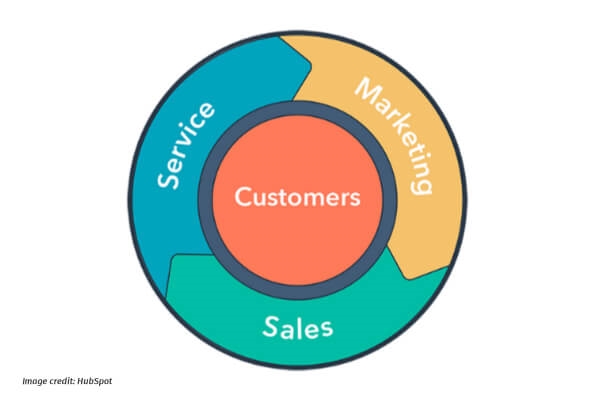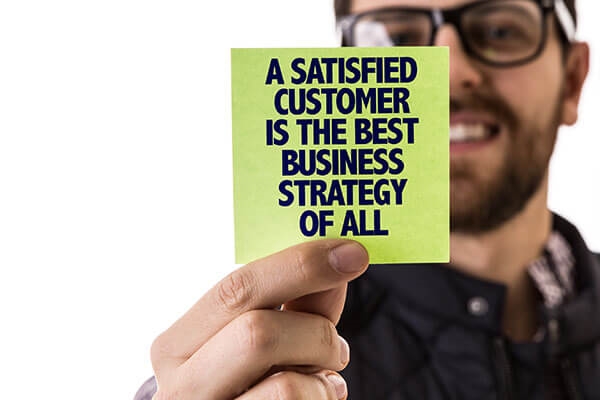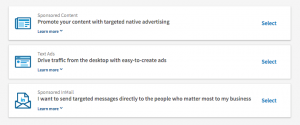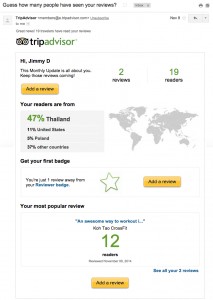Aligning sales, marketing, and service

If you’re like most marketers, you could name the basic parts of the sales funnel in your sleep: Awareness, Interest, Evaluation, Decision, and Purchase.
Of course, businesses have tweaked the model over the years, adding extra steps and so forth, but the basic premise has remained the same. But there is one problem with the model: it’s the opposite of customer-centric. In fact, in the traditional sales funnel, leads are treated a bit like uniform widgets moving along a conveyor belt, with various things happening to them along the way.
The problem is that if you’re not centered on the customer, your marketing efforts might be going to waste. If we had a nickel for every brilliant content strategy that seemed to explode with engagement while yielding little (if any) measurable return on investment, we’d have more than a piggy-bank full of change.
Centering the customer in your sales model changes that, though, because the customer now drives all content and all marketing efforts, instead of the other way around. In this piece, we’ll explain a new sales model. Maybe by the end you’ll be like us: falling ever-so-slightly out of love with the funnel — and in love with the flywheel.
A what wheel?
Like its predecessor the funnel, a flywheel is not just a metaphor, but also a real-life tool that powers multiple, modern-day inventions. Invented by James Watt of lightbulb fame, the flywheel is a disc or wheel around an axis. It has assorted industrial applications and can be found in car engines, ships, and a lot of other places where energy needs to be generated, amplified, stored, and stabilized.

The flywheel effect, described by Jim Collins in his book, Good to Great, describes a massive, 5,000-pound metal disc mounted horizontally on an axle. He asks the reader to imagine pushing it, so that it turns around that axle. At first, getting it to move at all is extremely difficult. But with each push, it gets fractionally easier and the flywheel begins to pick up speed. Collins writes:
Then, at some point—breakthrough! The momentum of the thing kicks in in your favor, hurling the flywheel forward, turn after turn … whoosh! … its own heavy weight working for you. You’re pushing no harder than during the first rotation, but the flywheel goes faster and faster. Each turn of the flywheel builds upon work done earlier, compounding your investment of effort. A thousand times faster, then ten thousand, then a hundred thousand. The huge heavy disk flies forward, with almost unstoppable momentum.
It’s a great metaphor for marketing. Because that momentum isn’t the product of any single push. Instead, the energy is cumulative, generated by a lot of little pushes, with the whole greater than the sum of its parts.
Ideally, marketing and sales should work the same way. The energy, leads, and revenue created by marketing efforts is not due to any single channel, piece of content, or campaign; it’s a cumulative effect. And once it really gets going, a good marketing campaign keeps spinning. It generates energy.
Putting the customer at the center
Instead of a funnel into which prospective customers are unceremoniously dumped, the flywheel puts the customer at the center of the wheel: the axle.
Hubspot CEO Brian Halligan, for example, sees the customer as the lynchpin, with the flywheel itself divided into three equal segments, each representing stages along the customer journey: attract, engage, and delight. Each area creates energy and passes it along to the next, with the delight phase feeding back into attract.
Other flywheel devotees divide the disc into Marketing, Sales, and Service — again putting the customer in the center position. Each effort feeds into the next, cycling around and around, but always circling the customer.
This may be the most important aspect of the flywheel model — that it centers the customer. The funnel, on the other hand, doesn’t consider how those customers can feed back into the funnel (or the flywheel) to help create additional growth and engagement.
The funnel can’t conceive of customers buying from you more than once, so the momentum you build acquiring customers via the funnel just falls away. Following every quarter, every customer, every conversion — you’re starting all over again.
Learning to fly
The momentum of a flywheel is determined by three primary pieces:
- The weight of the wheel
With a physical flywheel, the greater the mass of the flywheel, the greater its momentum and the harder it is to stop. In the customer-focused model, the “weight” looks like an exceptional customer service experience that builds your reputation and brand in ways that create retention, build ambassadors, and deliver value into your marketing and sales segments. The way that you deliver that customer experience will be unique to your business model.
- How fast you spin it
The speed in the flywheel model is really about the number of “pushes” you give the wheel. How much content is your marketing team delivering? Which channels are you using to reach prospects? How many leads are coming from the content?
- The friction
Reducing flywheel friction is about ensuring customers remain satisfied and keeping your efforts aligned. If poor sales performance is slowing the momentum from marketing — or if poor service is hurting retention of hard-won sales — your flywheel will slow down, and your business will suffer. On the other hand, when everything is aligned, your efforts will feed into each other and keep your flywheel humming along.
Finding alignment and purpose
It’s one thing to draw up a model and another to align cross-organizational efforts in real life. Part of finding alignment is cultural, getting leadership to buy in and coordinating communication among departments. But a huge part of the lift has to be operational — and will be dependent on having technology that enables marketing, sales, and service to coordinate.
At CallTrackingMetrics (CTM), we’ve been thinking this way for some time now — though we only recently discovered the flywheel model. Our call intelligence and management platform brings together all the three segments of the flywheel: marketing, sales, and service.
It tracks call sources, lets agents tag and score calls, helps businesses respond immediately to inquiries, and provides a data-rich environment that can inform stakeholders across organizations about marketing, sales, and service performance. It also helps create reporting to determine returns on investment for content and campaigns, customer feedback, and more. In short, it makes it easier to understand and engage with customers in a meaningful, helpful way.
That engagement matters. A lot. Because, at the end of the day, marketing and sales are all about creating better experiences along your customers’ journeys. And the funnel model has never recognized the important part customer service teams play in generating customer retention, brand building, and developing stronger relationships and alignment between your business and your customers — as well as within the disparate teams in your organization.
In the end, the flywheel ensures that everyone in your business shares the same purpose: keeping the flywheel spinning, in order to create better relationships with and experiences for your customers. However hard it might seem to get it spinning at first, once the flywheel gains momentum and sales start churning, it’s well worth the effort.
Marketing Land – Internet Marketing News, Strategies & Tips
(90)
Report Post







